To start, this is not a recent travel story. We visited Isla de Gigantes July last year, few months before the rampage of Typhoon Yolanda, wherein Isla de Gigantes is one of those places that received a big hit. Good thing that the island group has been making significant recovery. I am sharing this, though late, to give you an idea how great it is to stay on its islands. I can guarantee that the beauty it once had when we visited the place remains ’till the present. Nature always survive nature, anyway.
We accessed Isla de Gigantes via Iloilo City and arrived by batch. Myself and Joana arrived via the 5AM flight from Manila. The couple Emerson and Eliana, who came from their Guimaras tour, arrived next. Marx, on the other hand, was the last one to meet us.
We gathered at SM City Iloilo and together took a taxi to Tagbak Terminal where our van ride to the Municipality of Estancia was waiting.
After nearly 3 hours, we set foot in Estancia bus terminal. We still needed to take a tricyle to bring us to Estancia Feeder Port where our pre-contacted boatman was waiting.
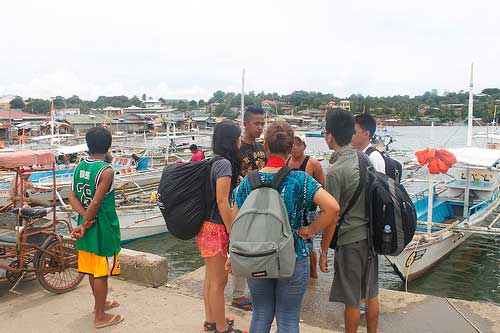
Someone met us in the feeder port. He told us that he is from the tourism office and everything were all arranged. We asked if we could take our lunch first before setting sail but he insisted that a lunch was already prepared in the island. So, we immediately started our 2-hour boat ride to Barangay Asluman in Isla de Gigantes Norte.
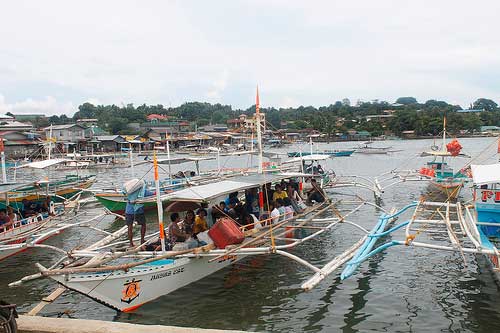
Halfway of the not-so-boring boat ride, we made a stop over at Polo Pandan, an isolated island occupied with fishermen, resting huts, few trees and other wild floras, some outrigger bancas, and a number of makeshift crab cages. Surrounding the islands are crystal clear waters and black corals. We stayed there for a while, and then continued our boat ride.
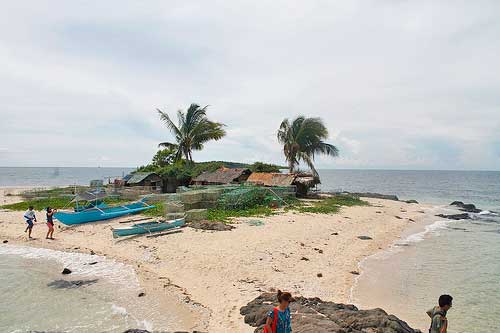
After an hour, we finally reached the shore of Barangay Asluman. What we immediately noticed were scallop shells covering the entire shore. This only proved that the scallops were the primary source of living in the island before tourism.
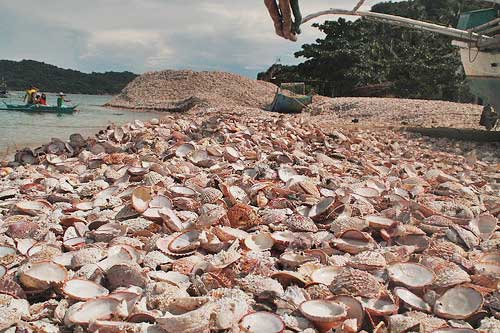
Few motorcycle riders waited us along the unpaved pathway. We thought they were contacted by our host to fetch us. Later, we realized that they were motorcycles-for-hire, locally called as single /sing-gol/. We paid ₱10 for the trip to Gigantes Hideaway Resort where we booked our accommodation.
We checked in to our very humble “kubo“. For only ₱200/day, we couldn’t ask for more. We were facing the mangrove area and the breeze was blowing to our direction so we really felt comfortable during the entire stay.
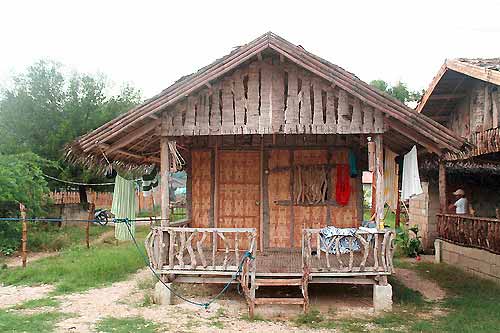
Displayed behind our hut was a traditional wood coffin they found in the nearby cave (Langub). It didn’t look creepy so we just negated its presence every time we passed beside it, especially at night.
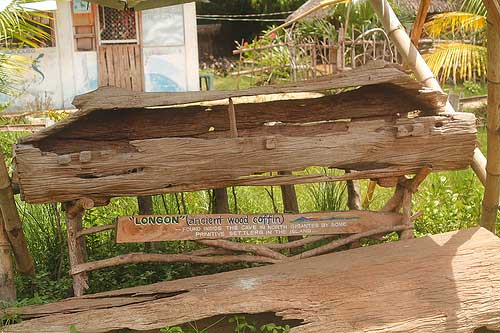
After settling in, we feasted to various scallop dishes they prepared for us.
[To know more about what we else we tasted during our stay, visit “Scallop and Seafood Feast at Isla de Gigantes“]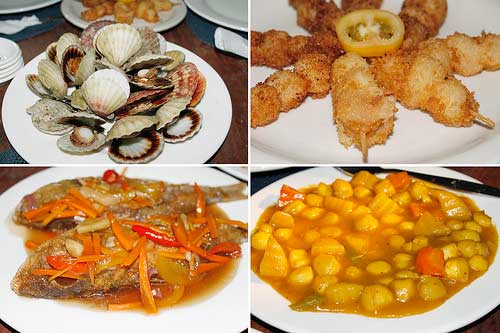
We rested for a while after the sumptuous meal. Afterwards, we headed for the main event, the island hopping tour. The boat that brought us to Isla the de Gigantes was the same boat we took for the island hopping. It was a package deal by the way. We paid ₱5,000 and that included our return trip to Estancia Feeder Port. For the updated rate, contact Mr. Joel B. Decano of Gigantes Hideaway Resort through his mobile numbers:+63 918 468 5006 or +63 915 579 6612.
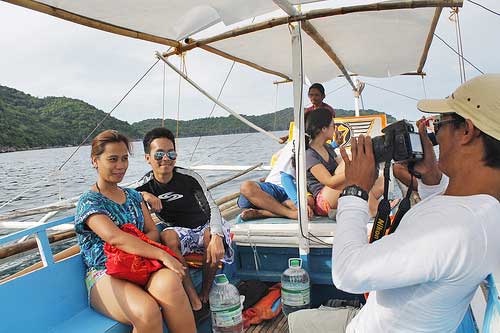
Since the tide continued to recede, we made the Tangke, a lagoon, as our first stop. The water vanishes at low tide so we must get there before it’ll be too late for us. Luckily, we arrived in Tangke half-filled, thus, we still had some water to lurk in.
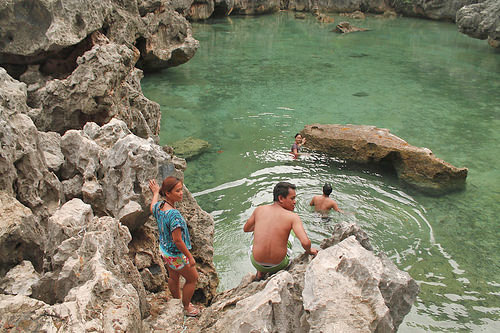
When we had enough of the Tangke, we trekked to a rocky trail and then cliff-jumped. After gathering all the guts, I took the lead. Marx followed me shortly.
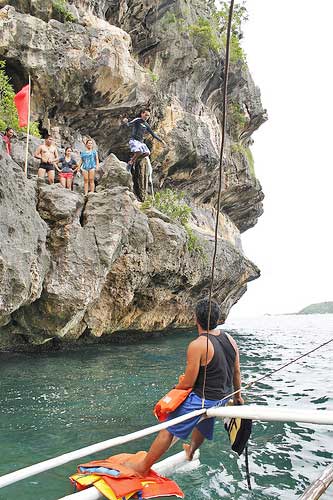
We visited Cabugao Gamay next. Even in a gloomy day near sunset, it still exhibited a great beauty. Cabugao Gamay was the highlight of the tour. We almost own the island since we were the only ones there during that visit.
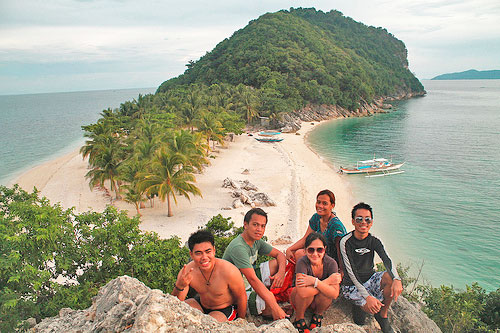
We then beach-bummed at Bantigue Island sandbar. The water was slightly odd – calm but a sudden deep on the left side while rough and shallow on the other. I guess that wasn’t the situation all year round.
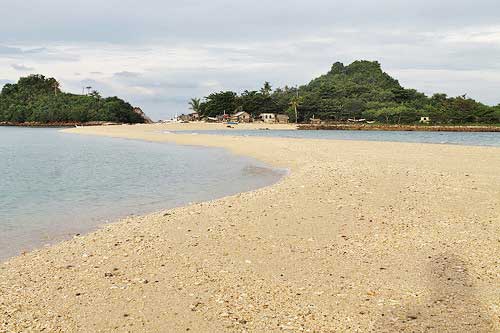
It was almost dark when we reached Antonia beach. I heard that the beach is really good for snorkeling but we missed it. Who would like to swim in the water that looked creepy at dusk? We decided to continue the beach bumming though and, of course, had some photo shoot.
Antonia Beach was the last stop of our island hopping.
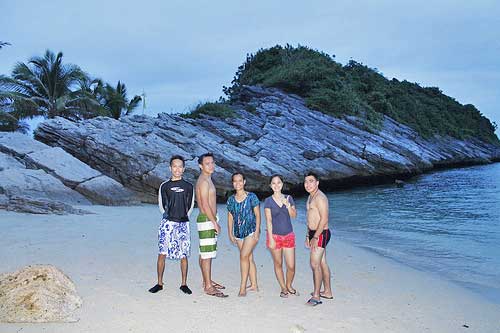
It was already passed 6PM when we returned to Barangay Asluman and the tide went really low. Since the shore is rocky, our boatman told us to get off, even though we were still 15 meters away from the shoreline. We waded across the shallow sea, praying not to step on any spiky or thorny marine creatures.

We took a shower and changed shortly after our arrival to our rooms. We then feasted for another set of scallop dishes for dinner. It wasn’t disappointing because the shellfishes were cooked in different way. The house water by the way tasted a bit sour – ’twas probably where the village name was derived (Sour is aslum in local language).
There was no life at night so we had to sleep early. But before that, we arranged with our guide to bring us to the lighthouse at dawn for to witness the sunrise while we were on the top. Unfortunately, it rained too hard. I just took a snapshot of the sunrise in front of our nipa hut when the rain stopped. It was still a great spectacle.

The sun was already up when we headed to the lighthouse. I was surprised with what I saw. It was a piece of a free standing metal. Locals told us the the old one was destroyed (how sad) so the government replaced a new one. That is to guide the ships that pass the busy nautical highway at night.
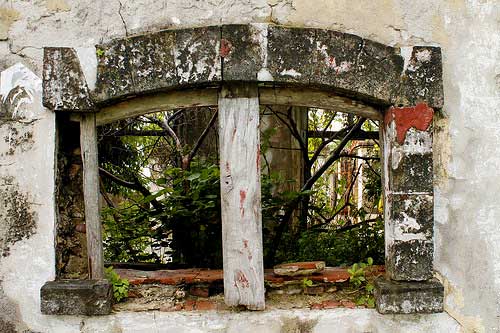
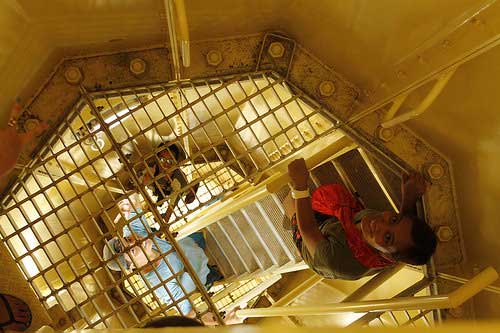
I took the lead in getting to the top of the lighthouse (as always). However, while we were already at its highest, I maintained a strong grip to any solid or stable railings I can hold to. I just learned that I have a slight fear of height that very moment.
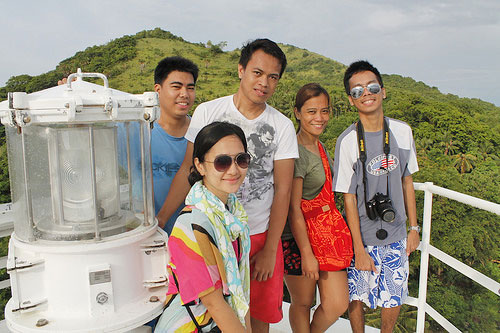
After conquering the mild acrophobia, our motorcycle riders brought us to the dropoff point of Langub Cave. We started our trek immediately when we were all gathered.
Going the cave’s entrance was a bit of a challenge. It just rained so the trail is muddy and slippery.
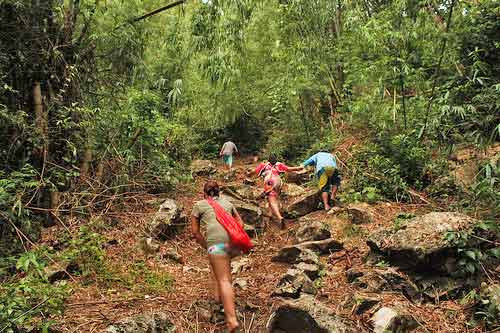
But not a slippery hill could stop us. We were able to see and explore the cave. Unfortunately, the stalactites and stalagmites were all dried and the walls were gravely vandalized. We noticed some signs of life with micro-stalagmites forming but it may take centuries to eventually bring back the shimmer.
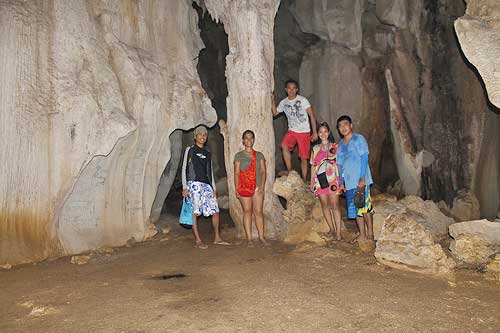
We decided not to take the other exit since we don’t have the gear for the next level of difficulty. Hence, we exited on the same opening where we got in.
And who thought going down is easy. In the photo below, Joana was making a hard time, even with the assistance of our guide.
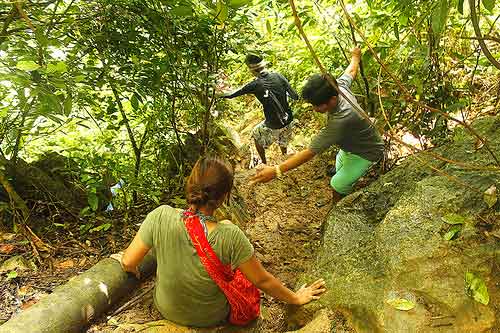
Since we really got dirty after the spelunking and trekking, we looked for a way to the beach. We spent sometime in Langub beach before going back home.
If you happen to visit Langub Beach, take extra precautions and don’t keep your eyes away from the kids. The underwater current is really strong and it may send you to the deeper and rocky side of the island.



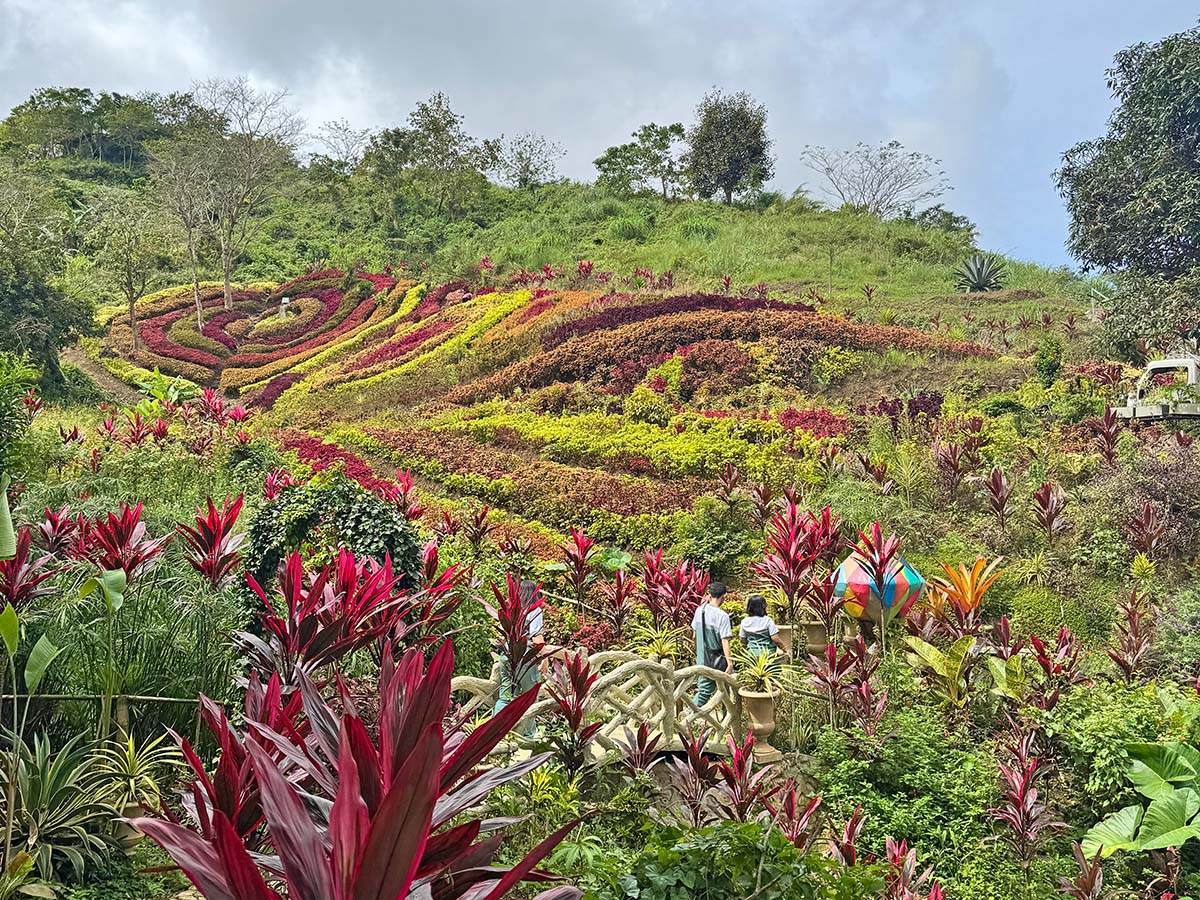
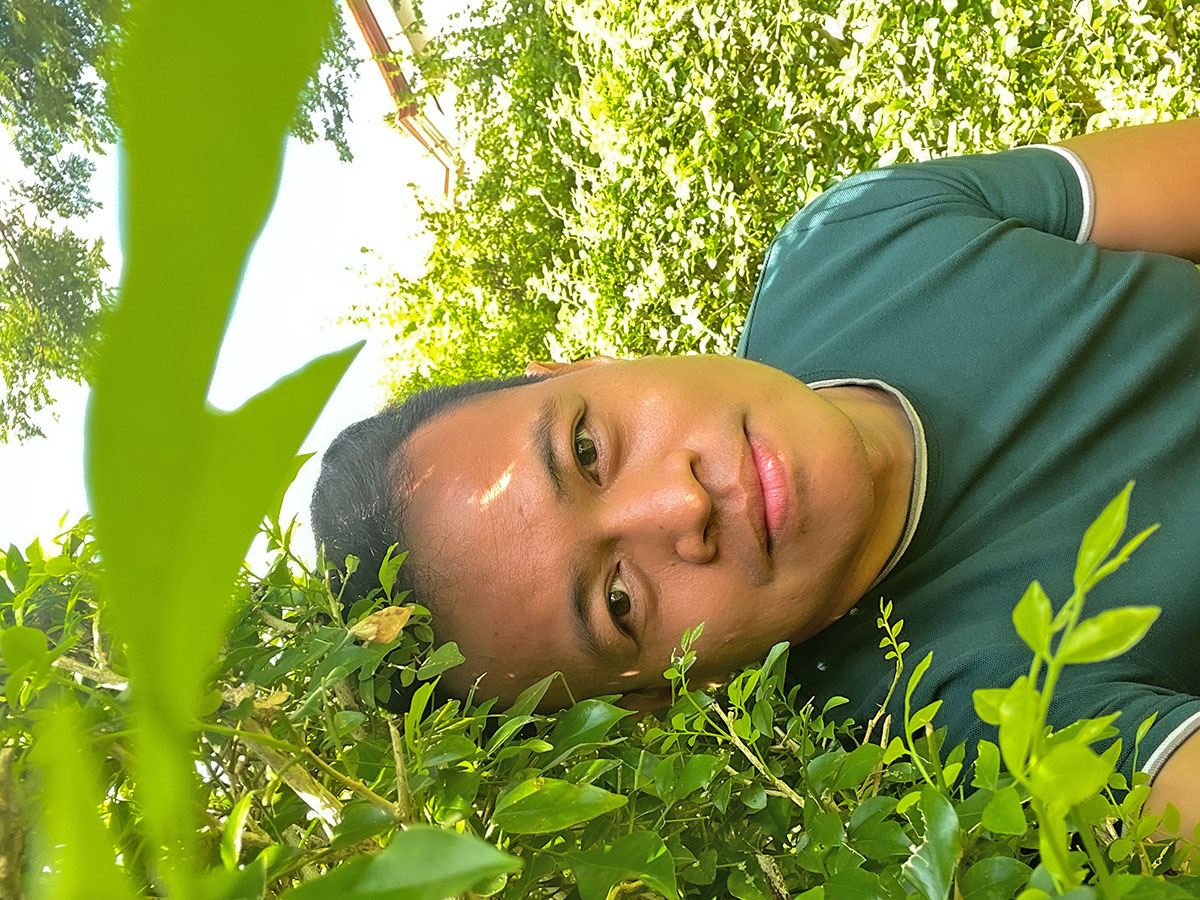
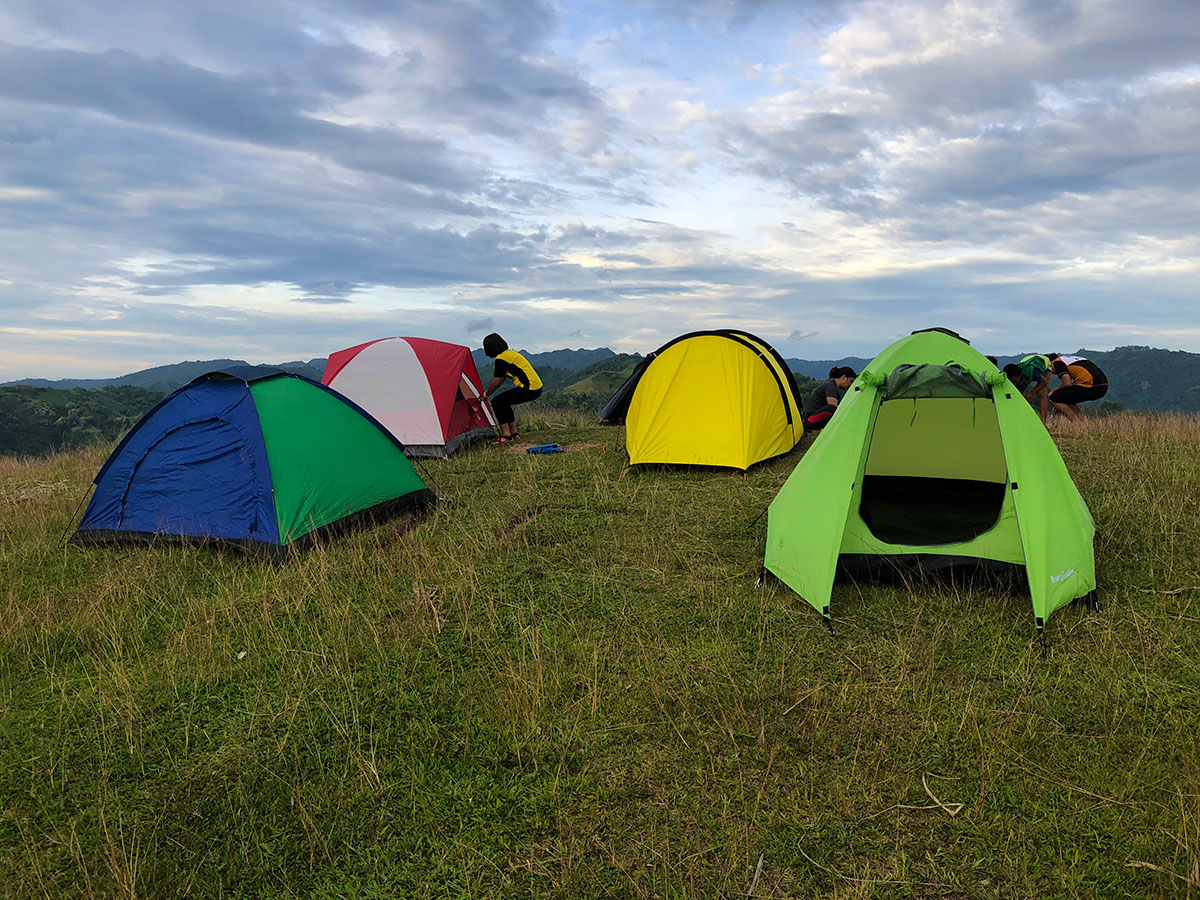
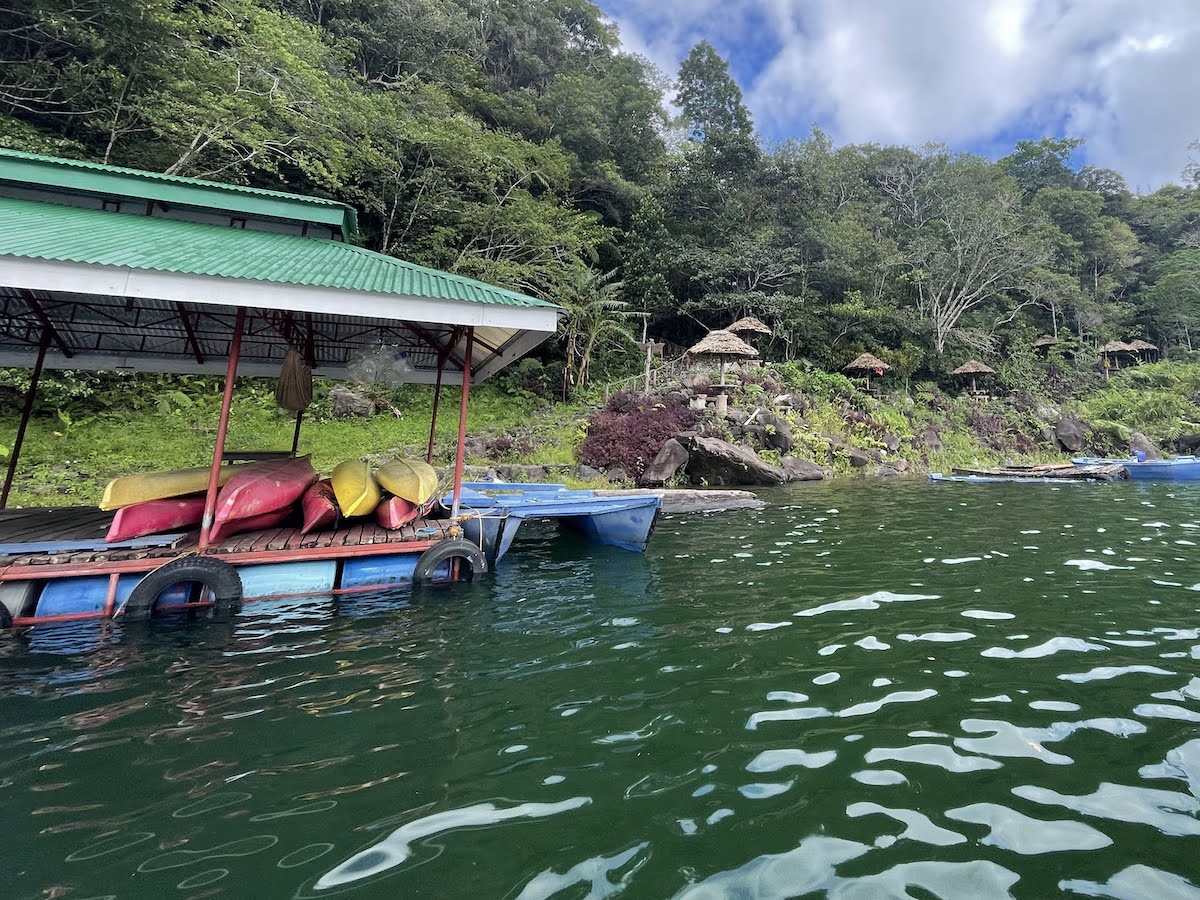
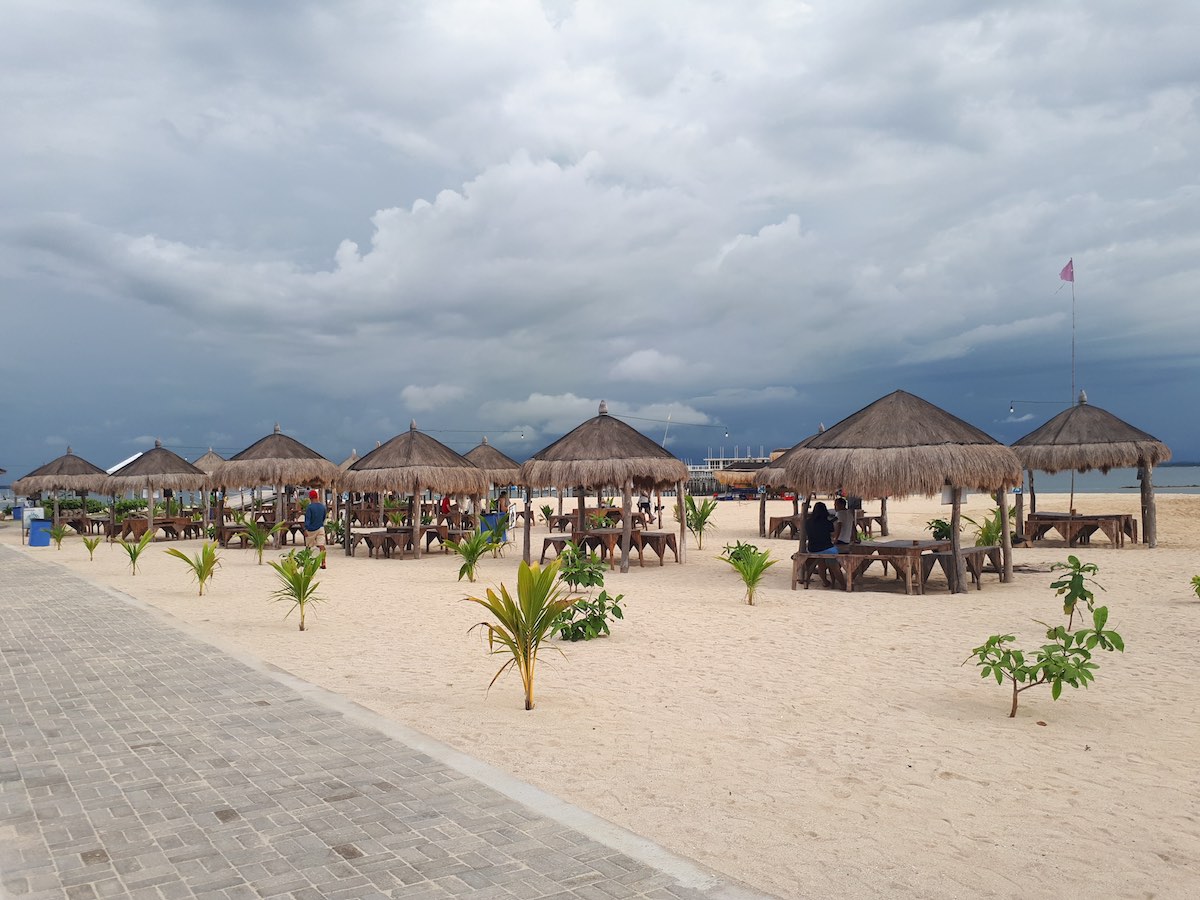
This is still in my bucket list. I hope I could visit Isla de Gigantes next year! Great pics!